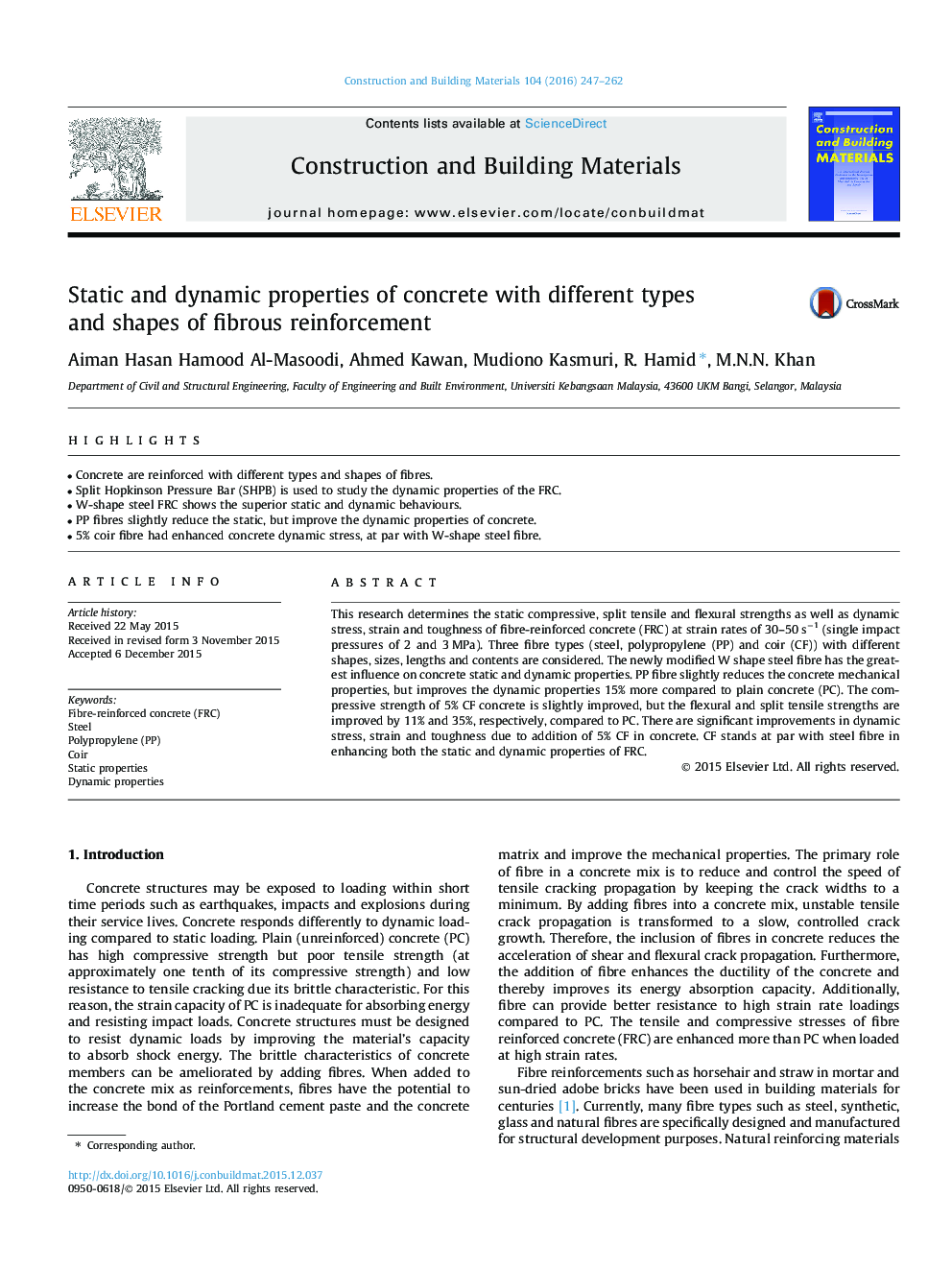| Article ID | Journal | Published Year | Pages | File Type |
|---|---|---|---|---|
| 256319 | Construction and Building Materials | 2016 | 16 Pages |
•Concrete are reinforced with different types and shapes of fibres.•Split Hopkinson Pressure Bar (SHPB) is used to study the dynamic properties of the FRC.•W-shape steel FRC shows the superior static and dynamic behaviours.•PP fibres slightly reduce the static, but improve the dynamic properties of concrete.•5% coir fibre had enhanced concrete dynamic stress, at par with W-shape steel fibre.
This research determines the static compressive, split tensile and flexural strengths as well as dynamic stress, strain and toughness of fibre-reinforced concrete (FRC) at strain rates of 30–50 s−1 (single impact pressures of 2 and 3 MPa). Three fibre types (steel, polypropylene (PP) and coir (CF)) with different shapes, sizes, lengths and contents are considered. The newly modified W shape steel fibre has the greatest influence on concrete static and dynamic properties. PP fibre slightly reduces the concrete mechanical properties, but improves the dynamic properties 15% more compared to plain concrete (PC). The compressive strength of 5% CF concrete is slightly improved, but the flexural and split tensile strengths are improved by 11% and 35%, respectively, compared to PC. There are significant improvements in dynamic stress, strain and toughness due to addition of 5% CF in concrete. CF stands at par with steel fibre in enhancing both the static and dynamic properties of FRC.
